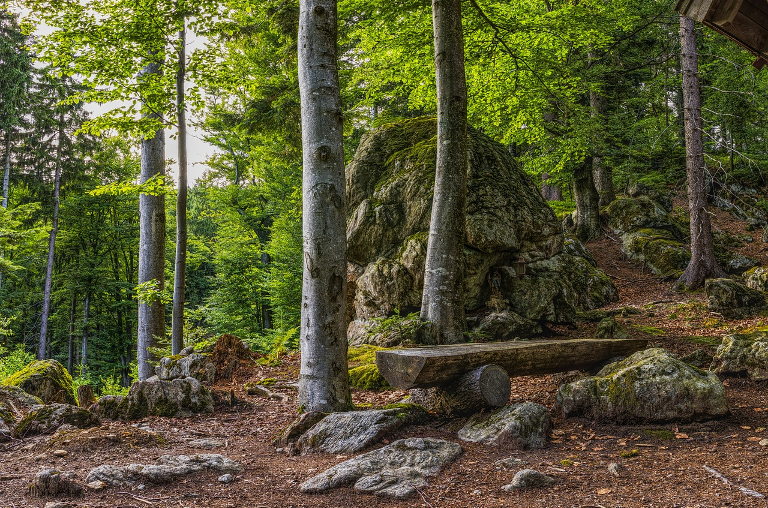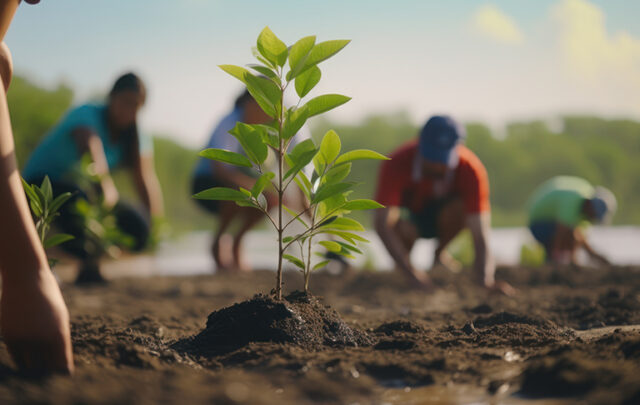All around us is Greensong—the sounds, vibrations, smells, and tastes of a living planet. Can you sense it? Are you listening? What does it tell you?
Years ago I read Orson Scott Card’s series The Tales of Alvin Maker, an alternative, and magical, history of the United States. Alvin has a special ‘Maker’ ability where he can sense the world around him and reorganize matter to heal things, to fix things, to build things. He also has the ability to hear greensong—that’s the energy or vitality of our living planet. (Not surprisingly he can barely hear it when he’s in a place where nature has been most disrupted.)
While this is just a novel, the concept of greensong is a powerful one. And real—not in the magical or mythical sense—but absolutely in the sense that if you stop and listen, greensong is all around us, and communicating with us. (I’m writing this in a wooded area and it’s actually noisy—with several different birds warbling different messages to each other.)
But most of us no longer hear greensong. Why is that?
First and foremost we no longer hear greensong because we don’t pay attention. Either we have our ears plugged up with earbuds or we’re humming a tune or we’re chatting, or our minds are simply distracted with whatever thoughts preoccupy us (whether that’s work projects, what you need to do when you get home, or what’s going to happen on the next episode of whatever show you’re currently watching). When your mind is not quiet, it is nearly impossible to hear greensong (at least for non-native speakers like the majority of us).
Second, many of us live in deeply wounded environments, like cities, where greensong is almost gone. Sure, it’s still there, faintly, in parks, in the occasional singing bird that’s nesting in a street tree; in the pollen that spreads across the city in the spring; in the rustling leaves turning colors in the fall. Worse, even where we may still have access to greensong, people frequently close themselves off to it. Many people start their days by entering their attached garages and exit their cars in a parking lot at their workplaces, perhaps never making it outside all day—and certainly not to a place with much greensong. We’ve cut off so many sources of greensong that, by this point, few of us even realize it’s missing.

Third, many of us can no longer sense or understand greensong even when we are surrounded by it. What explains this? Is greensong like language-learning, where there is a period in early life where one’s brain is more plastic and can easily learn and mimic new phonemes? That could certainly be the case—as it is certainly harder as an adult to learn simple things like tree identification, bird and birdsong identification, and many other Ancestral skills that children can quickly pick up (let alone the more complicated elements of greensong). But that doesn’t mean we can’t once again learn to hear greensong. Just as learning a language is still possible at an older age, we can retrain our brains to sense—and make sense of—greensong. With regular exposure to greensong, we should be able to start to hear it again, though that might not mean we’ll be able to understand it. Just as with a language we’ll need someone trained in hearing and understanding greensong to teach and guide us.
The Value of Greensong
So we have difficulty hearing greensong. So what? What’s its value?
Greensong provides information. In Indigenous times, hearing greensong was essential for survival. Bird alarm calls provided huge amounts of information about what animals (or other humans) were in the area and how close, increasing security and hunting success, for example. Greensong can tell you about seasons, about changes in weather, and probably dozens of other things that I never learned. Of course, much of this information doesn’t feel relevant in our consumer cultures where we no longer perceive our dependence on nature (as we get our food from stores instead of our surroundings) and where we can easily discover much of the information we need with apps on our phones (for now).
There’s also evidence that greensong makes us healthier. Just as Alvin Maker suffers in those places where there is no greensong, so do we. Several studies have found that simply taking a walk in the woods reduces stress and blood pressure (to the point where researchers have just created a new field of “Forest Medicine”). And exposure to greenspaces correlates with reductions in premature death, heart disease and Type II diabetes. Japanese researchers hypothesize that it is the chemicals that trees release, phytoncides, which have immune-system heightening properties. Imagine that: you’re walking through a sea of airborne chemicals, sounds, and other sensory-stimulants that inform and even physically change you.
How do we experience greensong? While I keep using the verb “hear” it’s not just with our ears, of course, but with our noses, our eyes, and our bodies (wind, sudden changes in humidity, etc.). I would argue it’s a metasense stemming from our other five senses. But we have to use this metasense or it atrophies.
But in more and more places, where the human environment has trampled the natural one, it may be nearly impossible to sense greensong, even for those whose metasense is well-developed. And few adults have developed this sense. We may never be fluent in greensong again but, as with language, children born listening to greensong can be—though not if they just listen passively (I grew up listening to my father and grandmother speaking Armenian and barely learned a word, unlike my son, who is actively being taught to speak Russian and is quite fluent).
So that means finding mentors versed in greensong and reclaiming this sense for yourself and especially your children. In Ancestral Skills training, people often find a sit spot in a natural setting and just sit—absorbing the sights, smells, sounds, and feelings of nature. The Japanese call this shinrin yoku (or forest bathing), but it simply means being present in a setting where greensong is existent. Too often we try to hike miles and miles, stomping and clomping, scaring away animals, reducing greensong (as animals go silent), and covering it up with our own footsteps and labored breaths. Instead, sit quietly, let the animals around you recognize you’re not a threat and they’ll go back to generating greensong for you to enjoy and try to understand. Along with the healing properties of being present in a place that resonates greensong, it’s important for us not to lose our ability to hear this greensong, as it could once again become an essential sense for our survival once our experiment with consumerism comes to a close.





